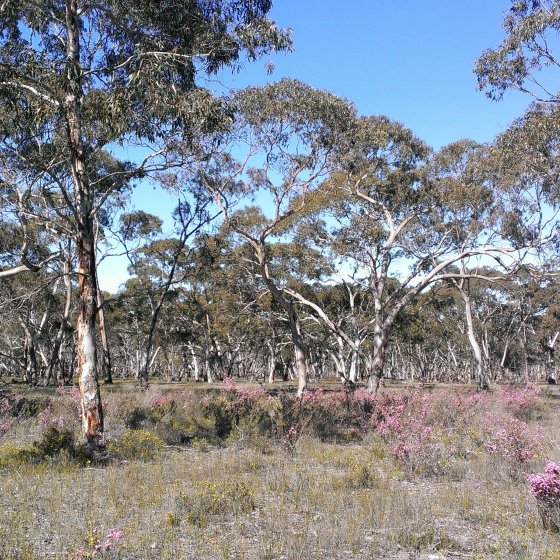South Australia has a land area of 984,221 km2, which is 12.7% of Australia’s total land area. We are the fourth largest state of Australian states and territories.
South Australia is home to diverse landscapes ranging from coastal areas to arid regions. It supports biodiversity, recreation, tourism, primary industries and cultural values. South Australia’s native biodiversity is globally unique and, therefore, forms an integral part of our cultural heritage and identity. Our biodiversity is still in decline.
- Home
- Environmental Themes
- Land
- Key Messages
Key Messages
South Australia
- South Australia’s native biodiversity is globally unique and, therefore, forms an integral part of our cultural heritage and identity. Biodiversity also underpins our wellbeing and economic prosperity. Therefore, protecting biodiversity is critical. South Australia has implemented a number of programs to help protect biodiversity, yet our native species and health of our ecosystems are still in decline with little indication of widespread recovery.
- Habitat loss and degradation is one of the key causes of species loss and biodiversity decline. Although there has been an increasing trend in the area of land under protection, more needs to be done to encourage the protection and, more importantly, the restoration of habitats to protect biodiversity.
- National parks, native vegetation heritage agreements and Indigenous Protected Areas safeguard the wellbeing of ecosystems, wildlife and communities, and play a vital role in addressing global challenges such as biodiversity loss and climate change. These areas also contribute to our health and wellbeing as we use parks for recreation, and they support South Australia’s natural and cultural heritage. Continued protection and sustainable management of protected areas are crucial for biodiversity and our communities.
- Competing and increasing land use, for example, with the expansion of housing and the development of renewable energy projects, may place additional pressures on biodiversity and vegetation as well as other land uses such as primary industries. The location, scope and operation of any new projects need to be sustainable and consider risks.
- A changing climate with increased temperatures, reduced rainfall and a greater frequency of extreme weather events such as drought, flood and fires, will have significant impacts on land and biodiversity, and poses risks to our communities, industries (particularly primary industries) and infrastructure. We need to prepare, adapt and resource accordingly.
- Consistency and reliability of data collection needs to be improved to inform condition and trend of biodiversity across the state. The South Australian Government is working towards improving our capacity to measure, collate, assess and report on biodiversity. Future improvements will also focus on reporting formats that adequately capture the richness of information to better inform evaluation, planning, regulation and conservation efforts.
- Emerging issues that may impact our habitats, ecosystems and biodiversity need to be identified and addressed. For example, but not limited to, increased tourism, expansion of renewable energy, new incursions of invasive species, potential impacts of light pollution on our native fauna and antimicrobial resistance can impact our food, agribusiness and environmental management sectors.
- The monitoring and management of Country would benefit greatly by better incorporating the cultural knowledge of Aboriginal peoples and providing them with access to land to facilitate this.
Australia
The Australia State of the Environment Report has indicated that within Australia:
Land
- There is intense competition for land resources, which is resulting in the decline of ecosystem health including native vegetation, soils and biodiversity.
- Native vegetation has been extensively cleared and continues to be cleared predominantly due to agriculture, forestry and mining. There is a lack of clarity about, and monitoring of, what is being cleared, where and for what purpose.
- There are now more non-native species in Australia than native species, which are likely to become more problematic with climate change.
- Our land is under significant pressure from climate change. This increases the risk of drought and bushfires and impacts our ecosystems and primary industries.
- The importance of Indigenous land and sea management is becoming increasingly recognised in conserving cultural heritage and natural values of land. However, more resources are required to facilitate actively managing Country. There is an opportunity to improve awareness of the benefits connection to Country has on our wellbeing.
- Soil health is continuing to decline. Regenerative agriculture is helping restore the functionality of soils. However, the adoption of these practices is still not widespread. Restoring the health of soils will also support healthy ecosystems and facilitate carbon capture.
- Better capture of data is required to help support the improvement of sustainable land management.
Biodiversity
- There is a trend of declining biodiversity, and the number of threatened species is increasing over time. Unless current management and investment is expanded, further extinctions are likely to occur over the next few decades. Monitoring of biodiversity is also still lacking. Therefore, we are unable to adequately assess the state and trend of biodiversity confidently.
- Pressures, such as habitat loss and degradation, and invasive species, on biodiversity are increasing. These pressures are being further compounded by climate change and extreme weather events.
- The area under protection through the addition of Indigenous Protected Areas has increased, recognising the knowledge of Indigenous peoples in managing Country. However, the Environment Protection and Biodiversity Conservation Act 1999 (EPBC Act) has not been effective in delivering improved outcomes for biodiversity and does not facilitate the management of pressures or restoring the environment. There have been some successes via conservation and translocation of threatened species and providing refuges from predators.
In response to the independent review of the EPBC Act, the Australian Government has developed the Nature Positive Plan 2022. This plan includes action on national environmental-economic accounts to inform environmental decision-making and builds on the recommendations of the Australia 2021 State of the Environment Report.
